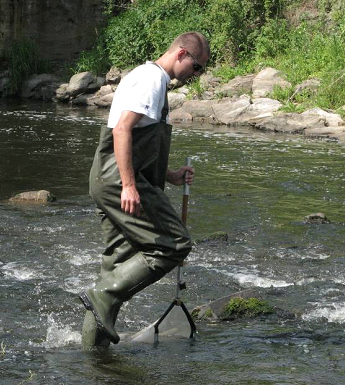
project of Technology Agency of the Czech Republic
(No. TA02020395)

 Samples of benthic invertebrates will be taken from paired localities; each pair includes one intermittent stream and one permanent reference stream. Relevant meteorological and hydrological parameters, which are important for the calibration of the relationship between biota and the intensity and frequency of drying, will be measured. Field work will continue for two or three years depending on the monitored parameters. The proposed sampling design will enable us to verify the duration of the „memory effect“ in the macroinvertebrate community (possibly months to years after a dry episode). At the same time it will provide a robust data set of macroinvertebrates at the gradient from repeatedly dried up sites over occasionally dried up sites to permanent streams. The drying gradient will be precisely quantifiable using data collected by measuring devices installed at individual studied localities and, therefore, calibration of metrics reflecting the response of the macroinvertebrate community to the length of dry episodes will be possible and fairly accurate. Developed methods and maps will be of benefit to water management, as they will enable to identify intermittent streams at any time, not only when the channel is dry.
Samples of benthic invertebrates will be taken from paired localities; each pair includes one intermittent stream and one permanent reference stream. Relevant meteorological and hydrological parameters, which are important for the calibration of the relationship between biota and the intensity and frequency of drying, will be measured. Field work will continue for two or three years depending on the monitored parameters. The proposed sampling design will enable us to verify the duration of the „memory effect“ in the macroinvertebrate community (possibly months to years after a dry episode). At the same time it will provide a robust data set of macroinvertebrates at the gradient from repeatedly dried up sites over occasionally dried up sites to permanent streams. The drying gradient will be precisely quantifiable using data collected by measuring devices installed at individual studied localities and, therefore, calibration of metrics reflecting the response of the macroinvertebrate community to the length of dry episodes will be possible and fairly accurate. Developed methods and maps will be of benefit to water management, as they will enable to identify intermittent streams at any time, not only when the channel is dry.